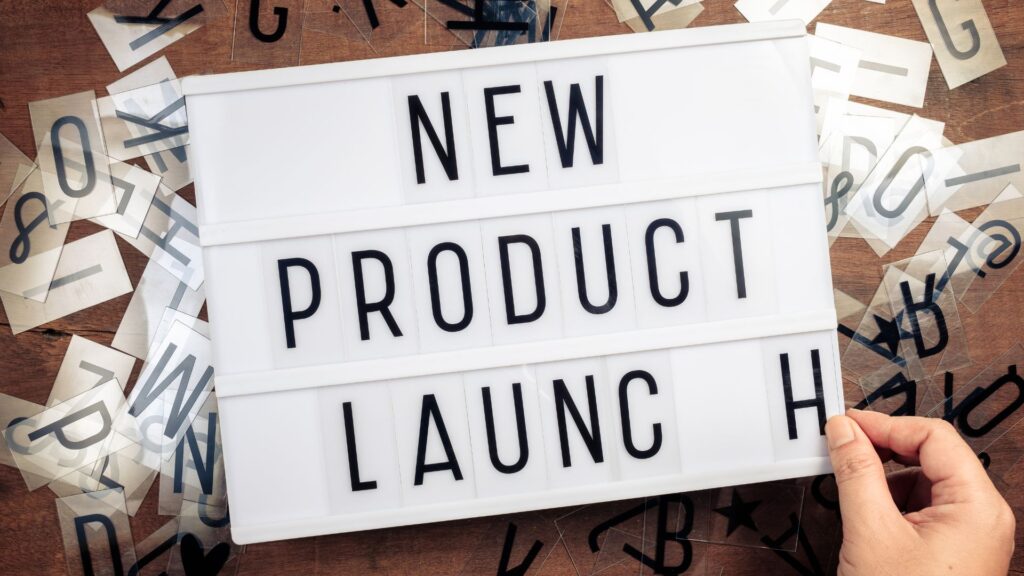New product development can make or break a DTC brand. Launch the right product at the right time, and you’re set for explosive growth. Get it wrong, and you could waste months of work and thousands of dollars on products nobody wants.
The challenge? Most DTC brands don’t have the enterprise-level resources that multinational companies use for product launches. You need the same level of strategic planning and execution, but with a fraction of the budget and team size.
That’s exactly what we explored in a recent episode of the Supply Chain Moves podcast, where host Lara Guevara sat down with Move Supply Chain’s NPD experts Nea Mangaliman and Myrna Baylin. Both bring over seven years of experience developing products for major brands like Unilever, Nestlé, and SM Retail Group, and they’ve helped countless DTC brands navigate the complex world of new product development.
Here’s what every DTC founder needs to know about launching products that actually sell.
Why New Product Development Is a Lifeline for DTC Brands

Direct-to-consumer brands live and die by their ability to consistently launch new products. Unlike traditional retail models, DTC success depends on maintaining momentum through regular product drops that keep customers engaged and coming back for more.
As Lara shared from her experience at Human Nature, “A direct selling brand is living because of new products. If in one quarter we cannot launch a product, we’re going to die.”
This might sound dramatic, but it reflects the reality of the DTC space—brands that stop innovating quickly lose market share to more agile competitors.
The problem is that NPD for DTC brands is fundamentally different from enterprise-level product development. Large companies have dedicated marketing teams, extensive research departments, and substantial budgets for market validation. DTC brands often combine all these responsibilities into one role, expecting their sourcing specialist to handle everything from market research to production management.
This creates a dangerous gap. Without proper market research and strategic planning, even the best sourcing efforts can result in products that nobody wants to buy.
5 Must-Dos for a Successful DTC Product Launch

New Product Development (NPD) can be a daunting process, especially for Direct-to-Consumer (DTC) brands operating with limited resources. However, by focusing on the right strategies and practices, these brands can streamline their efforts and maximize the chances of launching successful products. Below are the top 5 dos to keep in mind when navigating NPD.
1. Validate Ideas with Real Customers
The most successful DTC brands don’t just assume they know what customers want—they validate every product idea before investing in production.
“It’s about making sure people will actually buy your products,” explains Myrna. “We don’t want to waste money, we don’t want to waste our time.”
How to validate on a budget:
- Use Instagram and TikTok to survey your audience
- Run small batch marketing orders (50–100 units)
- Collect input via polls, comment threads, and live feedback
- Beta test with your most loyal customers
One Move Supply Chain client even turns customer feedback into product ideas by asking for suggestions directly on their website.
2. Involve Supply Chain Partners from Day One
One of the biggest mistakes DTC brands make is developing products in isolation.
“Supply chain should be part of the discussion from the moment you have an idea,” emphasizes Lara. “We want to support you, but we don’t want you to launch something that won’t be successful.”
Engage your partners early to discuss:
- Current raw material costs
- Production capacity and limitations
- Lead times and minimum order quantities
- Seasonal variables and logistics constraints
Early collaboration helps avoid surprises and ensures your idea can actually be executed profitably.
3. Build a Realistic Timeline and Budget
Every experienced NPD leader will tell you the same thing: things will take longer and cost more than expected.
“Having a buffer gives you room to breathe,” says Myrna. “It saves you from big headaches later because you already set your expectations appropriately.”
Best practices:
- Add a 20–30% time buffer to every project timeline
- Account for at least 2–3 sampling rounds
- Plan for unexpected delays or factory rejections
- Use a project management tracker to stay aligned
Move Supply Chain gives clients detailed timeline templates that help visualize how every decision affects launch timing.
4. Prioritize Quality and Compliance from Day One
Treating quality assurance as optional is a fast track to a damaged brand reputation.
“QA is not optional,” says Lara. “It’s the backbone of success in any business, whether local or multinational.”
What to do:
- Always do third-party inspections for first productions
- Make sure your product meets U.S./EU/local compliance rules
- Keep a paper trail for scale-up and audits
- Never cut corners on safety-critical items
A $220 inspection could save you from thousands in returns, chargebacks, or PR disasters.
5. Prepare Your Supply Chain to Scale
You don’t want to sell out—and then lose your customers due to long restocks.
“Can your supply chain handle a spike in demand if your launch takes off?” This question must be answered before launch day.
Scalability checklist:
- Confirm vendor capacity and ability to flex
- Have at least one backup supplier pre-vetted
- Model out best-, mid-, and worst-case demand scenarios
- Build contingency plans for fulfillment and logistics
Myrna recalls a brand that lost thousands in confirmed orders because their supplier couldn’t scale up fast enough.
5 Common NPD Mistakes to Avoid in DTC

Launching a new product in the direct-to-consumer (DTC) space is an exciting but challenging endeavor. While creativity and innovation are crucial, avoiding common pitfalls is equally important to ensure success. Here are the five critical mistakes to steer clear of during the new product development (NPD) process.
1. Skipping Market Research
A “great idea” doesn’t matter unless someone’s ready to pay for it.
“Market research helps us determine what we really want to produce and be aware of what other brands are producing,” explains Nea.
Low-cost ways to research:
- Use polls on Instagram Stories or TikTok comments
- Analyze top-rated products and reviews from competitors
- Use AI tools to spot trends or keyword gaps
- Ask your own customers what they’d buy next
2. Relying on a Single Supplier
Even if you’ve worked with one vendor for years, don’t risk it all on one source. Trade tensions, tariff hikes, or shipping crises can upend your supply overnight.
Always develop backup options—and don’t wait until there’s an emergency to do it.
3. Ignoring Compliance and Certification Requirements
If you’re planning to sell in new regions (especially internationally), compliance is non-negotiable.
“The biggest risk is ending up with a vendor that can’t comply with required certifications,” warns Lara.
Research local regulations early, especially for:
- Skincare or supplements
- Electronics
- Child or baby products
- Any item needing safety certifications
4. Overcomplicating the First Version of Your Product
It’s easy to dream up the perfect all-in-one product. But feature creep kills momentum.
“Start simple, then expand,” advises Myrna. “That’s how you test the waters and add variations later.”
Keep it lean by:
- Launching with just 1–2 variants or flavors
- Starting with your MVP (minimum viable product)
- Scaling back features if needed to meet quality or timeline goals
5. Underestimating Production Timelines
Every new product is a learning curve—for you and the vendor.
“It’s something that’s fairly new for vendors too,” notes Lara. “Always give additional lead time, especially for new products.”
Assume 2–3 rounds of sample revisions and build buffer time into every milestone.
Pro Tips from Supply Chain Veterans
Attend Trade Shows to Expand Your Sourcing Options

Nea recommends trade fairs like Canton Fair:
“These events provide access to a vast network of suppliers and the latest industry trends.”
Involve Your Community in Product Creation
Myrna says:
“Invite customers to be part of the creative process. It makes them feel like co-creators and builds emotional investment before launch.”
Apply the China Plus One Strategy
Lara’s advice:
“Don’t rely entirely on China, but don’t ignore it either. Have a China +1 supplier already approved and tested.”
Final Thoughts: Launch Smarter, Not Just Faster
Successful new product development for DTC brands isn’t about having a corporate-sized budget—it’s about working smart and executing with strategy.
Brands that win are those that:
- Validate ideas with real customer feedback
- Bring in supply chain partners from day one
- Budget realistically and build buffers
- Invest in quality and compliance
- Prepare to scale when the time comes
And just as importantly, they avoid the landmines: skipping research, single-sourcing, ignoring regulations, overbuilding features, and underestimating production time.
As Myrna puts it best:
“Good NPD is about making the right product at the right time with the right market.”
Ready to Nail Your Next Product Launch?
The team at Move Supply Chain has helped dozens of DTC brands launch with confidence—bringing enterprise-level strategy to fast-growing businesses without the enterprise price tag.Book a free discovery call with Move Supply Chain to find out how fractional supply chain support can streamline your product development process.
